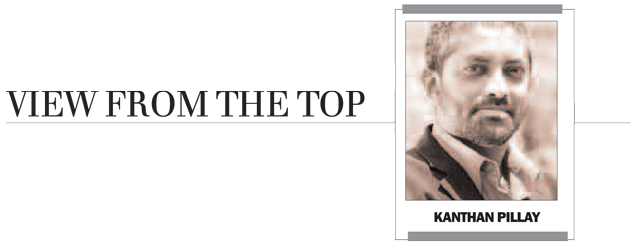
I keep a copy of the Constitution close to hand at all times. It's a useful reminder that contrary to what people might think the highest law of the land says about things that are close to their hearts, the truth is a lot less complicated.
Chapter 2, The Bill of Rights, has the following to say under section 16, Freedom of Expression:
(1) Everyone has the right to freedom of expression, which includes:
(a) freedom of the press and other media;
(b) freedom to receive or impart information or ideas;
(c) freedom of artistic creativity; and
(d) academic freedom and freedom of scientific research.(2) The right in subsection (1) does not extend to:
(a) propaganda for war;
(b) incitement of imminent violence; or
(c) advocacy of hatred that is based on race, ethnicity, gender or religion, and that constitutes incitement to cause harm.
In other words, there is nothing in our Constitution that says that any of us have a right to not be offended.
It's not a new concept. There's an English nursery rhyme dating back to the 17th century which goes "Sticks and stones may break my bones, but words will never hurt me." That translates itself into the common law of civil assault, which holds that mere name-calling does not give rise to a cause of action, while threatening someone with physical violence does.
And it's for that very simple reason that I believe that the ANC has erred by taking on a Cape Town artist who has painted a portrait of President Jacob Zuma styled in the like of an iconic portrait of Vladimir Ilyich Lenin but with his genitalia exposed.
That portrait, acrylic on canvas titled The Spear is part of a series titled Hail to the Thief II on display at the Goodman Gallery in Johannesburg.
To quote the gallery's description of the exhibition: "Established Cape Town based artist Brett Murray returns to Goodman Gallery Johannesburg with Hail to the Thief II. This body of satirical work continues his acerbic attacks on abuses of power, corruption and political dumbness seen in his 2010 Cape Town show Hail to the Thief. In this sequel show, Murray’s bronzes, etchings, paintings and silk-screens form part of a vitriolic and succinct censure of bad governance and are his attempts to humorously expose the paucity of morals and greed within the ruling elite."
The ideas expressed by Murray in this exhibition will strike a chord with many of us.
The Struggle on silkscreen paraphrases the last words of Solomon Mahlangu as "Tell my people that I love them and that they must continue the struggle for Chivas Regal, Mercs and kick-backs.
Another silkscreen, President, declares: "Now you have touched the women; you have struck a rock; you have dislodged a boulder; you will be President".
Monopoly , in wood and plastic depicts a booted foot striking a convict with the text "ANC (Pty) Ltd – Get out of jail free – This card may be kept until needed or sold".
I, personally, found myself moved by a 120cm x 120 cm piece called Killed Twice in plastic, wood, and paint declaring stylistically "Biko is Dead". This year marks the 35th anniversary of Steve Biko's murder, and I see nothing of what he stood for reflected in our society.
In short, this exhibition is a serious, considered body of work by an established credible artist which is likely to be lauded in galleries around the world.
The current ANC leadership could have chosen to respond differently. Were I making the call, I would have issued a statement to this effect: "The ANC wrote the Constitution which guarantees all South Africans the right to Freedom of Expression. We find this work of art to be distasteful and demeaning. We will leave it to the people of South Africa to decide whether this can be considered to be art."
Had they done this, a number of people – myself included – would have praised their stand; because I am among those who believes that the office of the president deserves respect no matter who occupies that position.
I predict that ultimately, the courts will rule against the ANC because the precedents in our own post 1994 law in favour of the bill of rights are clear.
But the more crucial question we need to ask ourselves collectively as a nation is this: Why were President Mandela and President Mbeki never subjected to this type of scrutiny? What is it that sets President Zuma apart from them?
I believe Murray's exhibition answers that question.
